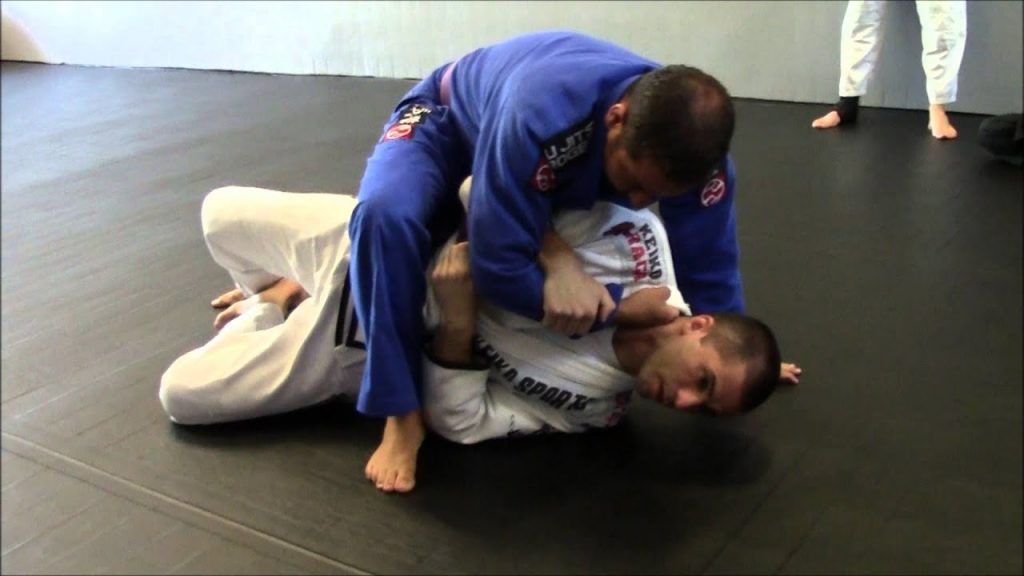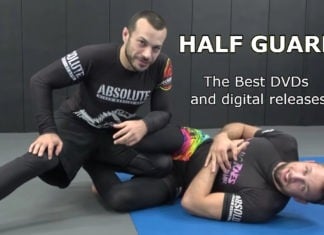
Brazilian Jiu-Jitsu is a very weird sport. No seriously. Just think about it for a little. We’re simulating murder in padded rooms that are more often than not, basements while wearing either funky looking pyjama blankets (Gis) or rashguards and spas combinations that are painful to the eyes. The strangest thing about it is that people are absolutely obsessed with Jiu-Jitsu and can hardly function whiteout getting their daily “fix”. That said, there are other strange aspects to BJJ as well. For example, for a sport where people claim to be open-minded and looking to progress constantly, we still fall prey to absolute claims and dogmas in BJJ.
Dogmas in BJJ are an everyday thing, and they’re starting to get on my nerves. It took me a decade to begin to see where they are, and I don’t like what I’m seeing – they’re everywhere. We have so many claims that thing should be done one way or not at all, or that we should never do certain things. Why? If someone can answer the why, then I’ll give them merit, shut up, and perhaps even accept dogma or two. However, most of the time I’ve asked folks why have not resulted in a satisfying answer.
The Absolutes Of An Endless Sport
What is the point of Brazilian Jiu-Jitsu? You’ll probably get as many different answers as there are academies across the world. Different things make different sense to people, and that is perfectly okay. However, we can all agree on several things that are true for BJJ no matter where you’re training, what belt you are, or what your favorite technique is.
First of all, the point of Jiu-Jitsu is to try and control another person against their will, so much so, that they willingly give up (tap to a submission). That would be the perfect scenario. This is exactly where we encounter one of the biggest dogmas in BJJ. There’s absolutely no way for us to expect to achieve this outcome every time we roll or go into a match. So, if we can’t expect to get to our main goal every time, how can we absolutely claim other stuff? I’ll go deeper into more practical examples later on.
Every now and then, I hear a student, usually an advanced blue or a purple belt, claim they’ve finally figured out the solution to something, and that nobody will be able to perform it on them ever again. Statements like that make me want to pluck my beard out since I’m bald and there’s no hair to pull. In a sport that is endless and unpredictable in terms of evolving, how could we possibly claim something to be absolute when we have no idea how things will turn out a week from now, a month from now or years from now? This is one more example of ego in BJJ, which is something we’re supposed to leave at the door, right?
Challenging Some Common Dogmas In BJJ
Let’s try and look at some of the things that, throughout the years, have proven to be not as set in stone as we thought. I will reiterate the concept that there’s no right and wrong in BJJ, so I can’t use an absolute myself and claim they’re wrong. What I can do is tell you why I think there are more effective ways to approach things, and that we should not just blindly accept that things are forever set, just because someone, even if it is a world Champion professor, says so.
The best way to learn Brazilian Jiu-Jitsu is by yourself. Don’t get me wrong, you need the gym, training partners, professors, and everything. However, it is just like learning to drive a car. You get the vehicle, the instructor, the classes but at the end of the day, you’ll have to start driving a car on your own in traffic to really learn and develop your driving style. It is the same with BJJ – professors are only there to teach you about traffic and the way a car works. That means that what works for them, might not work for you as good. And that’s the whole point of Jiu-Jitsu!
BJJ evolves with every student that walks through the doors. If we can get past the ego of being upper belts or coaches or professors, and accept that everyone has something to show us, we’ll all begin to learn more. This is the way BJJ evolves, but it will require us to really think outside the box, not just claim to be doing so. Let’s get into a few examples of Dogmas in BJJ that don’t make sense anymore.
Turning Your Back
Never turn your back, either standing or on the ground! This is one of the dogmas in BJJ that you’ll hear over and over again in BJJ and MMA gyms all around the world. For a while there, it might have made sense. However, nowadays you need to ask yourself why? If the answer is “because they’ll choke you”, nothing could be further from the truth. Between someone being on your back, and someone choking you out is the entire sport of Brazilian Jiu-Jitsu. With all the crazy new turtle systems, back defense systems, and other innovative concepts, turning your back to an opponent actually opens up more opportunities than dangers.
Passing The Guard

The whole problem is that people should teach and verbalize it like this, saying passing the legs instead of passing the guard.
Staying Out Of Bad Spots
This absolute ties once again with the defensive systems and positions that are going to be the next big thing in BJJ. To be honest, the concept of being the person on top, and preferably past the legs, still stands as a desirable way to grapple. However, saying that you never want to be caught in the mount, or side control, or knee on belly is only going to create unrealistic expectations in people., Moreover, it’ll create extreme reactions of panic and stress once they’re inevitably caught there.
Instead, you should encourage people to get caught in “bad spots” When they relax, they’ll start learning that the bad spots are not really that bad. Yeah, you might be down on points, but it is a sport. The best thing about it is that there’s always a way out, a counter, or an escape that will turn the tables in your favor. All it takes is adjusting your approach a bit, and not demonizing being on the bottom of BJJ positions.
Technique Beats All
Nope. This might have been the selling point for Aikido somewhere in the 80s. Since then, modern contact combat sports, mostly MMA, have proven this to be a very misguided notion. Where there’s strength, there’s no justice, according to an old saying. If you’ve ever tried to battle with a seasoned high-level wrestler, you know what I mean. Strength, explosiveness, and agility all accentuate technical knowledge, and in Jiu-Jitsu, you can expect people to have technical knowledge already. That means that factors like strength can change everything and you need to factor them in, instead of thinking you’ll brush past a wrestler blue belt if you’re a highly-skilled technical purple belt that weighs 130 lbs. there’s a reality check coming your way really soon.
It is not just strength that you need to factor in. there’s also pain that can play a huge role. Have someone place a knee on belly, with all their weight over your floating ribs. You’ll be in a world of pain praying for them to submit you or get to mount. No amount of technical knowledge is going to help there and you need to adjust your belief systems accordingly.
Crossing Your Legs In An Armbar

Extending The Legs In Mount

In Summary
Whenever people in BJJ say they should always do something, or never do something, the best thing you can do for them is taking a leaf out of Danaher’s book and slap them with a stick. Instead, we should always ask why we’re doing something, or not doing something, for that matter. I encourage all the people in my gym, from white to black to constantly ask me why. If I can’t answer than I shouldn’t be showing them a particular move or concept. Keeping things honest helps us learn more, and stop the loop of creating dogmas in BJJ that halt progress.











































